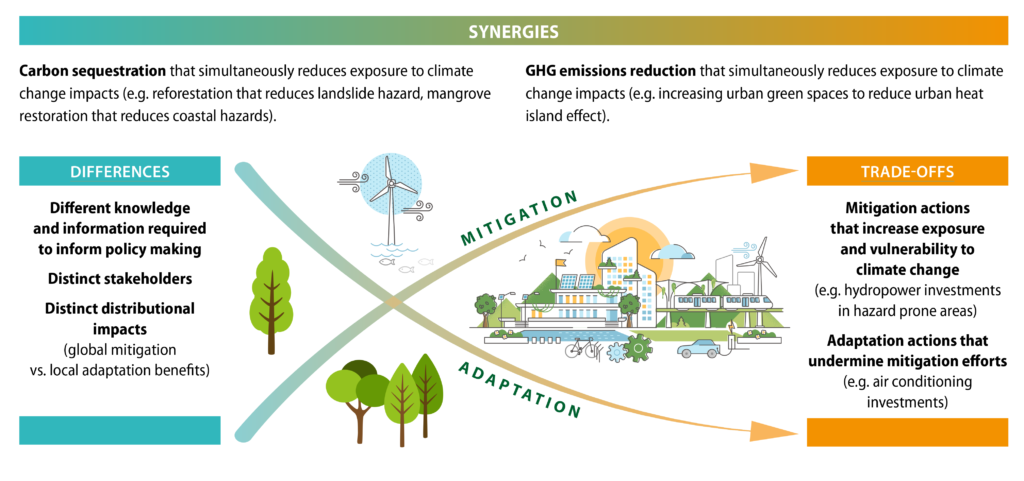Climate Resilience in America: Climate change impacts are becoming increasingly visible across the United States, from severe flooding in the Midwest to devastating wildfires in the West and intensifying hurricanes along the Gulf and Atlantic coasts. As these challenges mount, a powerful movement is emerging: communities taking climate resilience into their own hands rather than waiting for top-down solutions.
This grassroots approach is reshaping how America responds to environmental threats and may serve as a model for addressing other complex societal challenges.
What Is Climate Resilience?
Climate resilience refers to the ability of communities to anticipate, prepare for, respond to, and recover from climate-related disruptions. Unlike climate mitigation, which focuses on reducing emissions to limit future warming, resilience acknowledges that some climate impacts are already unavoidable and communities must adapt accordingly.

“Climate resilience isn’t just about building higher seawalls,” explains Dr. Maria Chen, environmental policy researcher at Columbia University. “It’s a comprehensive approach that combines infrastructure improvements, social support systems, economic adaptations, and ecosystem restoration to create more robust communities.”
Why Local Solutions Matter
While national policies and international agreements remain crucial for addressing climate change, community-level action offers several distinct advantages:
- Local knowledge: Communities understand their specific vulnerabilities and assets better than distant authorities
- Faster implementation: Local projects often face fewer bureaucratic hurdles than federal initiatives
- Tailored approaches: Solutions can be customized to regional geography, climate, and social conditions
- Increased buy-in: When residents participate in planning, they’re more likely to support implementation
This localized approach is gaining momentum as communities recognize they can’t afford to wait for comprehensive federal action, especially in areas already experiencing climate impacts.
Innovative Community Strategies
Across America, communities are implementing creative approaches to build resilience:
Flood Management Beyond Barriers
In Cedar Rapids, Iowa, which experienced catastrophic flooding in 2008, the city has moved beyond traditional flood walls to embrace a “room for the river” approach. This strategy includes:
- Converting flood-prone areas into parks that can temporarily store floodwater
- Restoring wetlands to absorb excess precipitation
- Implementing permeable pavement to reduce runoff
- Creating greenways that serve as recreational spaces during dry periods and flood channels during heavy rains
These nature-based solutions cost less than traditional infrastructure while providing recreational and ecological benefits even when floods aren’t threatening.
Heat Resilience in Urban Areas
As extreme heat claims more lives than any other weather-related hazard in the U.S., cities are developing comprehensive cooling strategies:
- Phoenix has mapped its urban heat island and is strategically planting trees to create shade in the hottest neighborhoods
- New York City has established a network of cooling centers and created an alert system to check on vulnerable residents during heat waves
- Los Angeles is piloting “cool pavements” that reflect rather than absorb heat, reducing ambient temperatures by up to 10 degrees Fahrenheit
These approaches combine physical infrastructure with social support systems to protect the most vulnerable residents.
Wildfire Preparedness
Communities in fire-prone regions are adopting the “Fire Adapted Communities” model, which includes:
- Creating defensible space around structures
- Updating building codes to require fire-resistant materials
- Implementing community-wide vegetation management plans
- Establishing evacuation routes and emergency communication systems
Boulder County, Colorado, has pioneered community chipping programs where residents can bring woody debris from their properties to be processed, reducing fire hazards while creating mulch for public landscaping.
Technology Enabling Community Action
Digital tools are dramatically expanding the capabilities of community resilience efforts:
- Early warning systems: Mobile alerts now provide hyperlocal notifications about imminent threats
- Crowdsourced monitoring: Apps like iNaturalist help track environmental changes and invasive species
- Virtual collaboration: Online platforms connect communities facing similar challenges to share solutions
- Data visualization: Mapping tools help identify vulnerable populations and infrastructure
In Norfolk, Virginia, residents use the “Catch the King” app to document tidal flooding, creating data that improves flood prediction models and helps prioritize infrastructure investments.

Funding Creative Solutions
Innovative financing mechanisms are helping communities fund resilience projects:
- Resilience bonds: Similar to green bonds but specifically funding adaptation projects
- Public-private partnerships: Businesses invest in community resilience to protect their operations and workforce
- Parametric insurance: Payouts based on measurable conditions rather than assessed damage
- Community benefit funds: Portions of renewable energy project revenues directed to local resilience initiatives
The Louisiana Coastal Protection and Restoration Authority has pioneered environmental impact bonds that pay returns based on successful wetland restoration, aligning investor interests with ecological outcomes.
Challenges and Opportunities
Despite promising developments, significant obstacles remain:
- Equity concerns: Low-income communities often have fewer resources for resilience projects
- Political resistance: Some elected officials remain reluctant to acknowledge climate risks
- Funding limitations: Adapting to climate change requires substantial investment
- Coordination gaps: Adjacent jurisdictions sometimes pursue conflicting approaches
However, these challenges are spurring innovations. The Environmental Justice Resilience Accelerator has emerged to help underresourced communities access technical assistance and funding. Meanwhile, regional climate compacts like the Southeast Florida Regional Climate Change Compact help coordinate efforts across municipal boundaries.
Building a Resilient Future
As climate impacts intensify, community-led resilience efforts are likely to accelerate. The most successful approaches share several characteristics:
- Inclusive planning that engages diverse stakeholders
- Multiple benefits beyond climate protection
- Flexible designs that can adapt to changing conditions
- Knowledge sharing with other communities
“What’s most encouraging is seeing communities move from fear to empowerment,” notes Dr. Chen. “When people recognize they can take meaningful action locally, it creates momentum that can spread nationwide.”
By building resilience from the ground up, American communities aren’t just preparing for climate challenges—they’re creating more livable, equitable places regardless of what the future holds.
Also Read- Where to Watch Uruguay vs Argentina Live: Stream the 2025 World Cup Qualifier Tonight!







